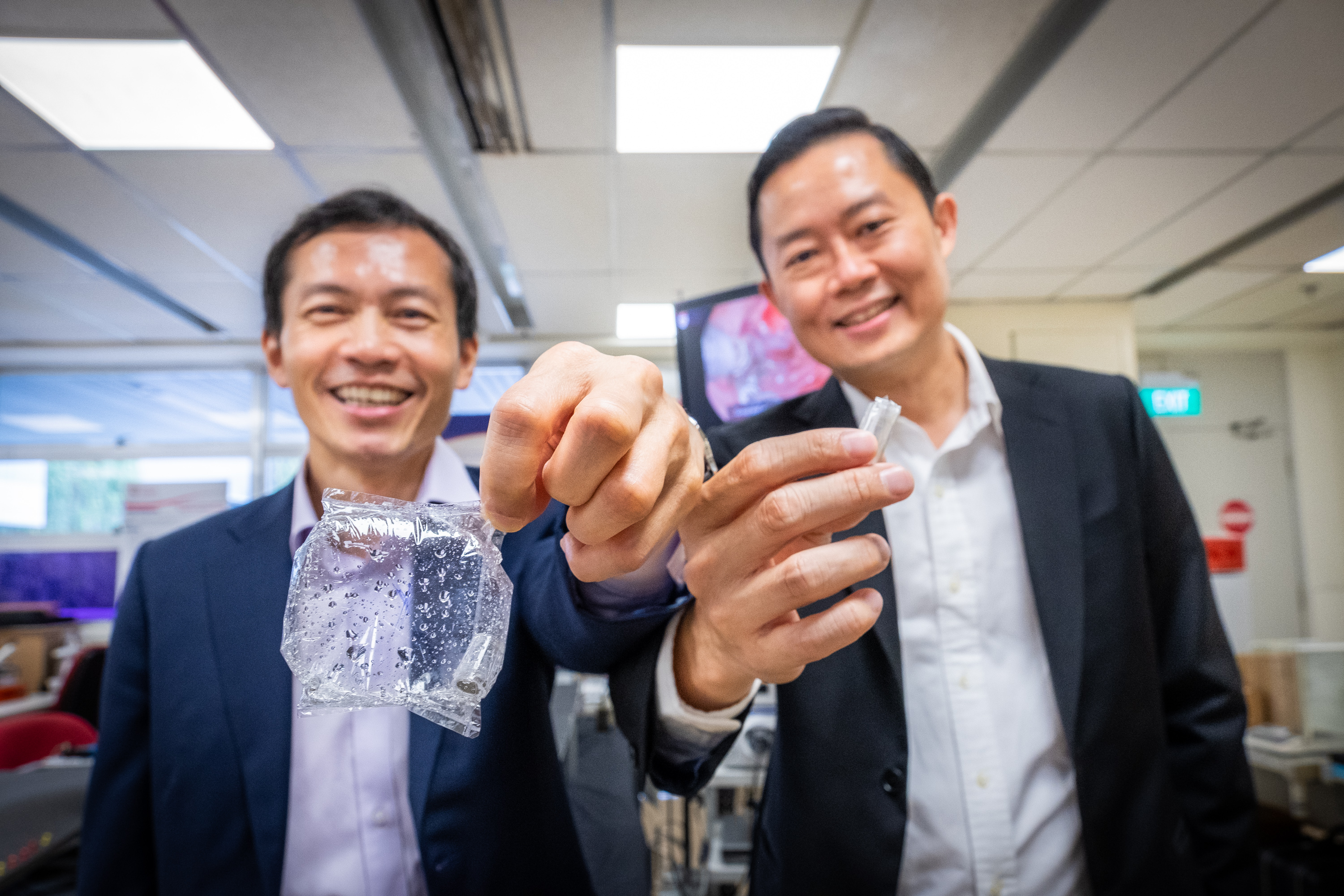Today, moderately obese patients and those who are too ill to undergo surgery can opt for the intragastric balloon to tackle obesity.
The weight loss intervention, which has been around for quite a while now, has to be inserted into the stomach via endoscopy under sedation. This has deterred some patients from taking up the treatment method.
Researchers from Nanyang Technological University, Singapore (NTU Singapore) and the National University Health System (NUHS) has developed non-invasive alternative, by means of a self-inflating weight management capsule.
Named EndoPil, the prototype capsule contains a balloon that can be self-inflated with a handheld magnet once it is in the stomach, thus inducing a sense of fullness. Its magnetically-activated inflation mechanism causes a reaction between a harmless acid and a salt stored in the capsule, which produces carbon dioxide to fill up the balloon.
In a press statement, NTU said it is also common for patients who opt for the intragastric balloon to experience nausea and vomiting. In fact, up to 20 percent requiring early balloon removal due to intolerance . The stomach may also get used to the prolonged placement of the balloon within, causing the balloon to be less effective for weight loss.
On the other hand, the novel made-in-Singapore weight loss capsule, designed to be taken with a glass of water, could overcome these limitations.
“EndoPil’s main advantage is its simplicity of administration," said Professor Louis Phee, NTU Dean of Engineering, who led the research team. "All you would need is a glass of water to help it go down and a magnet to activate it. We are now trying to reduce the size of the prototype, and improve it with a natural decompression mechanism.”
Professor Lawrence Ho from the NUS Yong Loo Lin School of Medicine explained, “EndoPil’s compact size and simple activation using an external hand-held magnet could pave the way for an alternative that could be administered by doctors even within the outpatient, and primary care setting. This could translate to no hospital stay, and cost saving to the patients and health system.”



